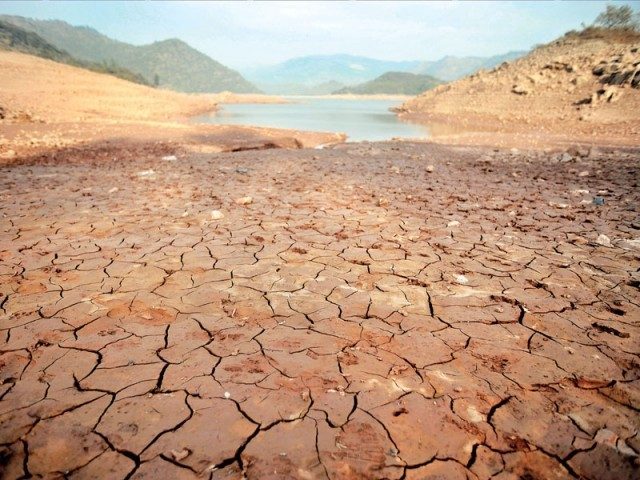One third of Pakistan is submerged under water as the floods hit the country. As a consequence, more than 1 million houses have been destroyed and 33 million people were displaced. Although Pakistan only contributes to 1% of the planet-warming gases yet Pakistan has been a victim of the climate change. The lands of Balochistan and Sindh have been inundated by water but the water experts predict that Pakistan is at verge of water scarcity by the year 2050.
Climate change, which was once considered a buzzword is now a reality. The impact of this phenomena is devastating, voicing immediate concerns for drafting short and long-term solutions. The 2022 floods in Pakistan were both unprecedented and appalling, leaving over a third part of the country submerged under water affecting 33 million people. What does this mean for a country which is to transition from being flooded with water to becoming water-scare by 2025? It means that foremost the country must wake up to this cold hard fact that while it emits less than 1% of earth-warming gases, it is the eighth most at risk nation to be hit by climate change. If we are consistently seeing these devastations in the forms of monsoon, substantial periods of droughts, hot-spells and floods then we need to understand how even amidst the floods, the country is heading towards becoming a water scarce country? Answering a question that is frequently asked, “If water is present in the same quantity as it was before, how is that the country is becoming water scarce?” gives the impression that we haven’t been able to understand the phenomena in the first place. And without having comprehended what constitutes as being water-scarce, it would be difficult to make and implement policies preventing water-scarcity from happening. Therefore, policy makers and its implementers need to understand the four dimensions of water scarcity in order to be able to deal with the upcoming crisis. These four dimensions include, Quality, Quantity, Availability and Accessibility.
Quality:
Quality means is the water safe to drink? Is it clean and not contaminated? Written by Hifza Rasheed, Fouzia Atlaf, Kiran Anwar and Muhammad Ashraf, the report entitled, “Water Quality in Pakistan Current Status and challenges,” in a table summarizes the presence of 40 contaminants which include iron, nitrates, fluoride, arsenic etc. to be a cause of potential health concerns and becoming the lead cause of diarrhea, hepatitis A & E, typhoid, bone diseases, blue baby syndrome and shortness of breath in infants etc. It has been documented that because there is no management of solid waste, the wastewater discharge is uncontrolled and sewage water leaks are frequent, in both cities of Lahore and Karachi the supply of drinking water is contaminated with microbes.
Quantity:
Quantity means do we have enough water for our daily usage, livestock and crops? Everyone is aware of what happened in Pir Koh, a distant mountain town of Balochistan. Of May 23rd, 2022, water shortage had forced residents of the area to drink from ponds which were cholera-contaminated. In the words of a local resident reporting to a newspaper outlet, “We have no other option but to drink contaminated water from the ponds along with the animals.” This lead to about 2,000 people getting infected and the death of three children. Cities, Lahore and Karachi are expected to experience extreme levels of water stress even after 2040. The demand is to increase for many decades with the supply on the decline because of climate change effects and common pollution.
Availability:
The timing and availability of water is important. Less availability of water for the agricultural sector which contributes 18.9 % to the economy, absorbing 42.3 % of the labor force would affect the backbone of the country. More, as in the form of floods, unmonitored and uncontrolled and it can lead to food shortages. During January 2010, decline was observed in the flow of Rivers of the Chenab because of building of the Baglihar Dam. This lead to a reduction in the flow of water at the headwork’s of Marala, causing immense economic damage, since there was not enough water which could irrigate the paddy crops. The 2022 Monsoon Floods in Pakistan made the country, which is the fourth biggest rice producer loss about 1.9 million tons of this crop, paving way for a long-term humanitarian crisis. Lose of food stock has left many without food support with malnourishment on the rise because of reduced availability of nutritious food.
Accessibility:
Do people have access to clean drinking water and if not what are the likely consequences in terms of water unavailability? The torrential monsoon rains have left about 3.4 million children at the risk of waterborne ailment. According to Medicine Sans Frontiers, water accessibility became one of the greatest problems during flooding, with aid workers warning that non-availability of clean water is leading to increase in diseases across the country.
Pakistan will become a water-scare country by 2025. We are well-aware of this occurrence and can see how it will manifest itself in the coming times. Three years from now, if we do not study water scarcity in context of Quality, Quantity, Availability and Accessibility and take no concrete actions, like buildup of dams and reservoirs in addition to other measures on water management and its conservation, we’ll be here and for that we are not prepared. Of May, Pakistan’s Meteorological Department had forewarned of higher than usual rainfall in the country, followed by flash flooding, but due to the present political turmoil, “this information fell on deaf ears, including the country’s media”. Let’s hope this time around we do not ignore the warnings of a country drifting towards water scarcity amidst the floods.
Arooj Naveed, is a water expert. She is a reader, writer and author of the book, Water Scarcity: A National Security Concern for Pakistan.




